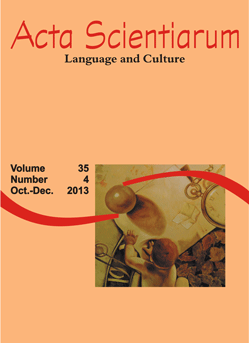<b>Normalization and normativity practices: the subjectivization of the hyperactive student within the social media</b> - doi: 10.4025/actascilangcult.v35i4.19879
Abstract
Current research verifies media discourse practices which objectify and subjectify the hyperactive student. Discourse processes that constitute the subject of education are analyzed. They verify the occurrence of discursive regularities between the medical and the school discourses within social media discourse. The theoretical and methodological concepts developed by Michel Foucault are employed, with special reference to topics related to enunciation modalities, disciplinary power, normalization and normativity which make possible the analysis of the effects of truth of enunciations in the corpus of current project. The latter comprise articles published in Brazilian newspapers and magazines and other educational texts on Attention Deficit and Hyperactivity Disorder (ADHD). Research investigates the discursive formations that deal with the identity of the subjects and tries to understand how knowledge-power and history-memory relationships produce truth effects on hyperactive students’ identity. Likewise, it also discusses how truth effects establish meaning effects that marginalize the subjects and label them as restless, non-attentive, disquiet and others furnished by authorized subjects who intend to normatize and discipline the hyperactive student within social environments.
Downloads
DECLARATION OF ORIGINALITY AND COPYRIGHTS
I Declare that current article is original and has not been submitted for publication, in part or in whole, to any other national or international journal.
The copyrights belong exclusively to the authors. Published content is licensed under Creative Commons Attribution 4.0 (CC BY 4.0) guidelines, which allows sharing (copy and distribution of the material in any medium or format) and adaptation (remix, transform, and build upon the material) for any purpose, even commercially, under the terms of attribution.
Read this link for further information on how to use CC BY 4.0 properly.




















6.png)









